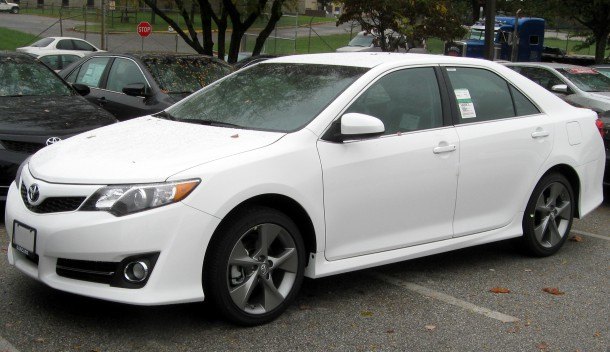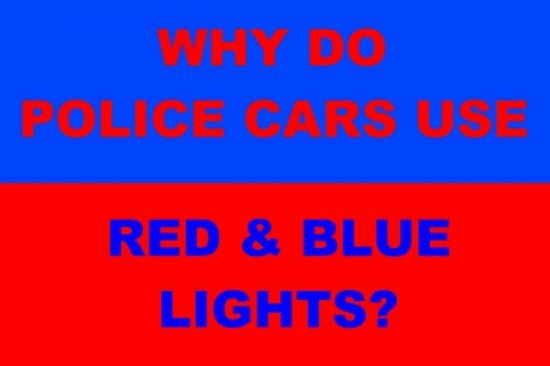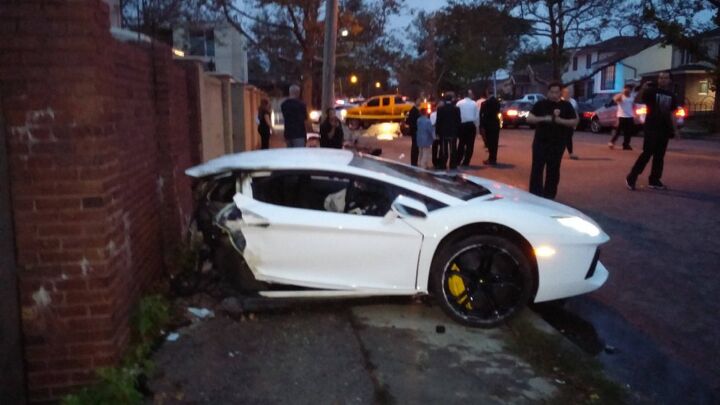Driving While Stoned (Slight Return). Nine Times the Legal Limit, Cop: "It's Doubtful That I Would Have Pulled Him Over"
Some time ago, TTAC published a guest post on the topic of driving under the influence of cannabis that more or less discounted the dangers of puffing while puttering around, at least for experienced potheads. Needless to say that post provoked some heated discussion. Now that Colorado has legalized marijuana for general use, the legislature there has decided that it was necessary to officially define “too high to drive”. It’s not clear if the reason was traffic safety or revenue since instead of using a behavioral standard for impairment, the new law creates an arbitrary blood level of THC, the active ingredient in cannabis, that would define a driver as illegally impaired, whether or not they were measurably impaired in their driving. Critics of the way impaired driving is enforced already say that the drive to lower legal blood alcohol content limits was intended to catch people who weren’t actually impaired, driving safely but drunk according to the law, a classic case of malum prohibitum rather than malum in se. Setting an arbitrary limit for THC would allow DUID, driving under the influence of drugs, to join DUI as a cash cow for city, county and state governments.
The new law in Colorado allows juries to convict someone of DUID if blood tests show a THC level of at least 5 nanograms per milliliter of blood. That level is the same as enacted in Washington following that state’s marijuana legalization initiative. It’s not entirely clear why the five nanogram limit was chosen. While some novice pot smokers may actually be impaired enough to affect their driving with 5ng/mL of THC in their blood, Reason, the libertarian publication, reports that many drivers are perfectly competent at many times that level of cannabinoids in their system.
Toyota Recalls 870,000 Units Due To Arachnophobia
One blah Monday morning, you’re commuting to the anonymous office park some 90 minutes away from the bedroom community you call a home in your equally anonymous Toyota Camry Hybrid, listening to yet another story about Congress kicking cans down roads and/or some wacky antics your favorite DJs had the past weekend while you take another swig of that mermaid-branded caffeinated goodness.
Peer-to-peer Car Sharing Services Found Lacking in Substantial Liability Coverage
In cities where owning a car can be a pain (New York, Boston, Seattle), drivers are opting instead to share vehicles with other drivers, with companies such as ZipCar, Car2Go, RelayRides et al offering their services to help the public get around. All anyone needs beyond the basics is a subscription to the car-sharing service, a reservation, and a drop-off location when they are finished with their errands. Even big-name rental car companies like Enterprise and Hertz are jumping into the new business model for a test drive, Avis having gone the farthest by purchasing ZipCar in January of 2013.
However, the insurance offered by these peer-to-peer rental companies might not all that it’s cracked up to be, with severe consequences should anything remotely catastrophic occur.
California Jury Finds Toyota Not At Fault In Unintended Acceleration Wrongful Death Lawsuit
A Califonia jury ruled that Toyota Motor Corp was not at fault in a 2009 accident in which 66 year old Noriko Uno was killed when her 2006 Camry ran into a tree after being hit by another car. Uno’s survivors blamed the accident and her death on unintended acceleration and Toyota’s failure to incorporate a brake-override system in Uno’s car. This was the first wrongful death lawsuit over accusations that Toyota products could uncontrollably accelerate. The jury found that Uno’s Camry was not defective, instead placing full liability for her death on the driver of the car that hit Uno before she sped the wrong way down a one-way street and into the tree. Uno’s survivors were awarded $10 million.
Federal Judge Rules Toyota Must Go to Trial in Camry Unexpected Acceleration Lawsuit
Toyota won two out of four of his decisions, but U.S. District Judge James Selna ruled that Toyota still must go to trial for an unexpected-acceleration case filed in federal court, according to a report by Bloomberg.
Insurance Institute Gives Redesigned 2014 Toyota Corolla Only "Marginal" Score On Small Overlap Crash Test
Recently, the Insurance Institute for Highway Safety, which conducts its own independent crash testing of new cars, added the “small overlap test” to its rating procedures. That particular crash test simulates a 40 mph collision wherein the front driver side corner of the car strikes an oncoming car or a fixed object like a utility or light pole. Twenty five percent of highway deaths in head-on collisions are from that type of wreck. The IIHS yesterday released test results for the newly redesigned 2014 Toyota Corolla and the compact sedan only received a “marginal” score. According to Automotive News, the Corolla cannot earn the institute’s Top Safety Pick honors, which are restricted to cars that have “acceptable” or “good” scores on all crash tests.
Tesla Stock Gets Double Whammy From Analyst Downgrade and Model S Fire
The price of Tesla Motors stock took a double hit this week as an influential analyst downgraded the company’s investment potential almost simultaneously with the viral spread of a Model S electric car burning in Washington state after running over metal debris in the road. On Wednesday morning, the Robert W. Baird company changed its rating on shares of Tesla from “Outperform” to “Neutral”. Around the same time Wednesday, Jalopnik posted a cellphone video of the burning Model S. As the video spread throughout the online automotive community and Baird analyst Ben Kallo’s report spread through the financial community, Tesla stock prices declined all day on Wednesday, finally finishing down 12.05 at $180.95 on volume that was higher than average for the stock.
Tesla Model S Burns Causing Stock Price Jitters
After photos were published of a Tesla Model S in Washington state burning following a collision, with a subsequent 9.1% dip in the price of Tesla stock, the company issued a statement. The car, “collided with a large metallic object in the middle of the road, causing significant damage to the vehicle,” the EV startup said. For the day, Tesla shares fell 6.2 percent, or $12.05, to close at $180.95 in New York trading on Wednesday. The decline was biggest one day drop in Tesla’s stock price since July 16. Analysts attributed the steep decline on their opinion that the stock was already overvalued, making it susceptible to any bad news.
Why Do Police Cars Use Red & Blue Lights? They're Visually Confusing
Sorry for the tease but to get the full effect of this post you’re going to have to click on Read More. It’s not that we want the additional clicks, it’s just that I’m using a graphic to illustrate this post that is so eye-searing that the layout and graphic designer in me just couldn’t put it on the front page above the break.
Once you do make the jump, you may have trouble focusing on the text in the image below. That’s because of a phenomenon known as chromostereopsis, which the American National Standard Institute ( ANSI/HFES-200, Part 5) defines as “the perception of depth resulting from the close proximity of two colors of disparate wavelengths”. There’s a good explanation of chromostereopsis here. Because of where in our eyes the receptors for different colors are, and how our eyes focus, we perceive different colors as being at different distances. Printers and others who do graphic layout have long known that because they are at opposite ends of the spectrum, it’s not a good idea to use blue letters on red backgrounds and vice versa. Most people perceive blue as closer than red, and as a result the human eye cannot focus on both red and blue at the same time, causing the optical illusion of blurry letters in the graphic below.
China's Qoros Earns 5-Star Crash Rating in Euro NCAP Testing
Automotive startup Qoros Auto Company has an interesting business model. Backed with the manufacturing know how of China’s Chery corporation, and the funds of the Israel Corp. holding company, controlled by the Israeli Ofer family, Qoros is designing cars in Europe to be sold in Europe, but built in China.
Lamborghini Splits In Half. Somewhere Bela Barenyi Smiles
First photos and now surveillance video of a dramatic wreck involving a Lamborghini Aventador and what looks like a Mazda, in Brooklyn’s Mill Basin neighborhood, have been bouncing around the ‘ol innerwebz because the Lambo split in two, right behind the passenger safety cell, as it was designed to do. The driver was apparently unhurt and you can see him walk away from the accident in the video. Somewhere, Bela Bareny i is smiling. It was Barenyi, working for Mercedes-Benz in the early 1950s, who invented the concept of building a car with front and back “crumple zones” that would deform and absorb energy in the event of a collision, protecting the passengers in a more rigidly constructed, non-deformable safety cell.
LG Chem Suspends Newly Started Chevy Volt Battery Production at Michigan Facility Over Chemical Not Yet E.P.A. Registered
Only weeks after starting up long-delayed production of lithium-ion batteries for the Chevy Volt at their new factory in Holland, Michigan, LG Chem has announced that they are stopping production for up to six weeks because a compound used in that production apparently had not been registered for use in manufacturing with the U.S. Environmental Protection Agency. While no shutdown order was issued by the EPA, the agency recently issued a subpoena to LG Chem, demanding a list of chemicals used at the Holland facility.
LG Chem spokesman Jeremy Hagemeyer said in an email to news agencies, “We discovered the possibility that this material may not be properly registered and made the decision to pause our production until we have that question resolved. We are currently reviewing the registration status and will work with the EPA to resolve the issue quickly. In the meanwhile, we are delaying production activities for approximately 6 weeks until we have confirmed the registration status or otherwise obtain approval from EPA.”




















Recent Comments